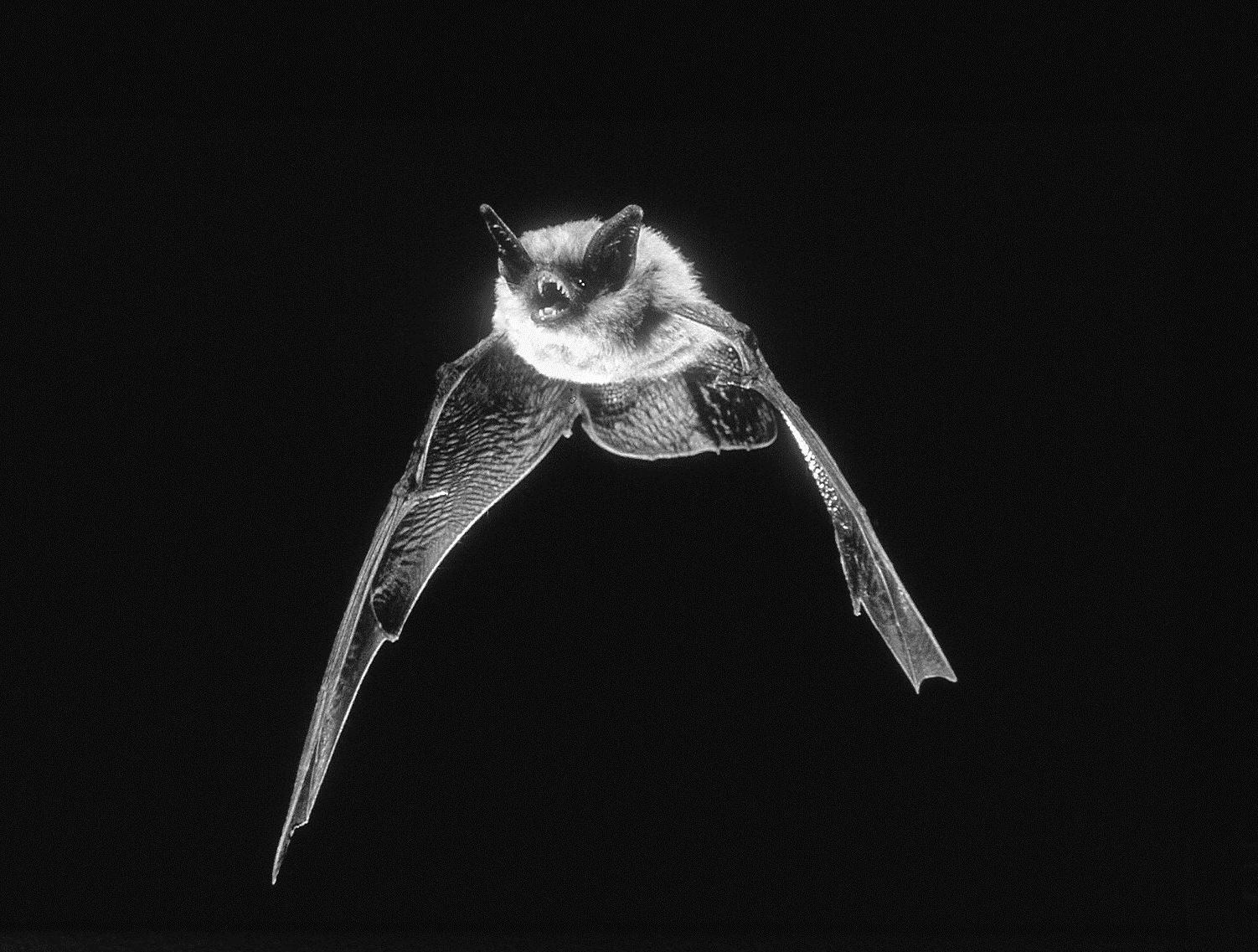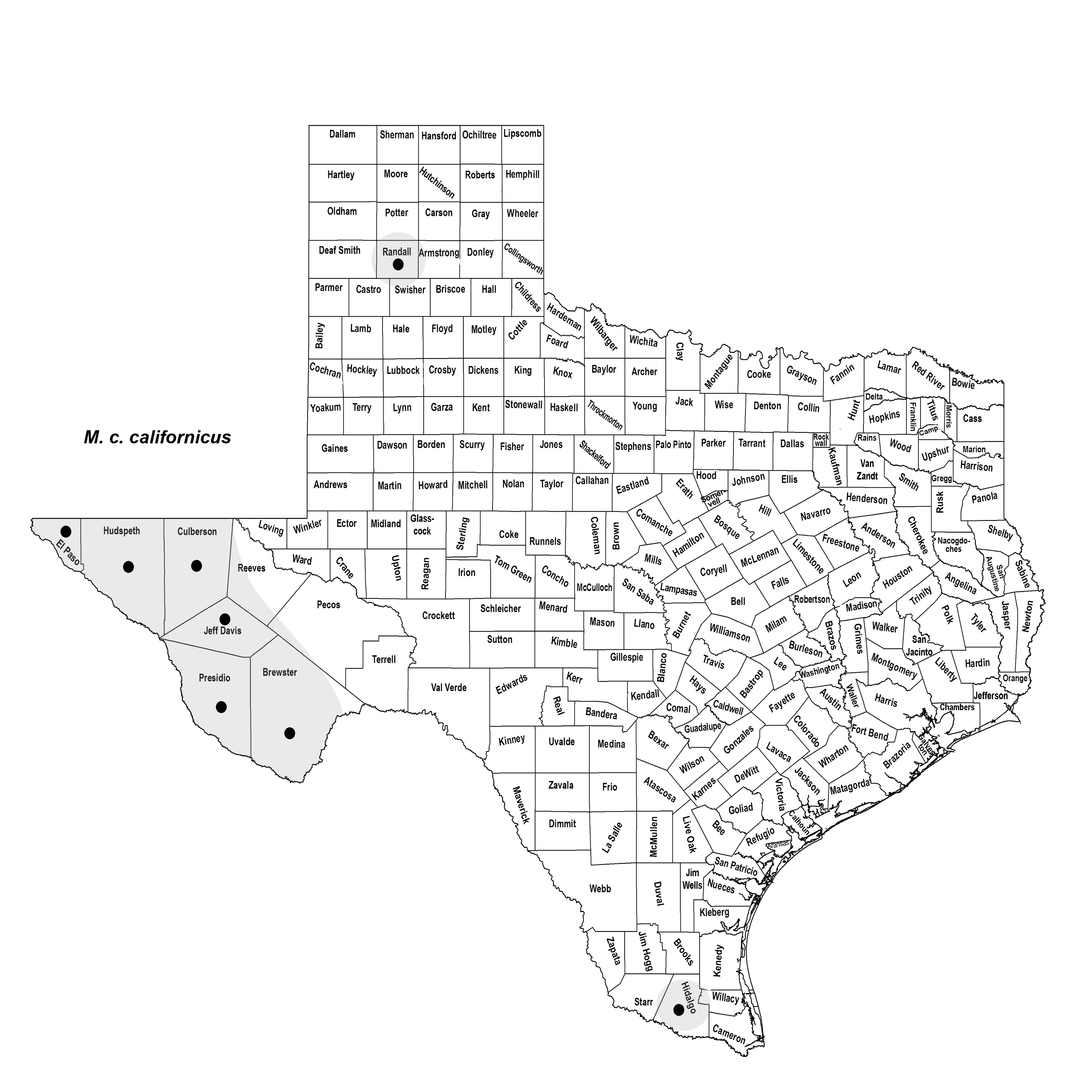CALIFORNIA MYOTIS
Myotis californicus (Audubon and Bachman 1842)
Order Chiroptera : Family Vespertilionidae
DESCRIPTION. A small Myotis with small feet, short forearms, and relatively long tail; ears disproportionately large, extending slightly beyond snout when laid forward; ratio of foot to tibia 0.37 to 0.46, usually 0.43 to 0.46; ratio of tail to head and body 0.91 to 0.98; pelage full, long, and dull; profile of skull rises sharply to the forehead and decidedly flat-topped cranium; upperparts ochraceous tawny. Most easily confused with M. ciliolabrum but differs in smaller thumb (thumb and wrist together 6–7.5 mm instead of 8–8.5 mm); smaller teeth; profile of skull rising abruptly, rather than gradually, to forehead; and braincase broader. Dental formula: I 2/3, C 1/1, Pm 3/3, M 3/3 × 2 = 38. Averages for external measurements: total length, 78 mm; tail, 37 mm; foot, 5.5 mm; ear, 13 mm; forearm, 32 mm. Weight, 3–5 g.

DISTRIBUTION. The California myotis, which commonly occurs throughout the western United States and Mexico, is known in Texas predominantly from the Chihuahuan Desert and Mountain and Basin regions of the Trans-Pecos, where it has been found in desert, grassland, and woodland habitats. Two disjunct records, one each from the Panhandle (High Plains region) and South Texas Plains, also exist. Based on the distribution of this species in northern Mexico, its occurrence in the southern portion of the state is not unexpected. This is one of the few species that winters in the Trans-Pecos, where it is found in desert, grassland, and woodland habitats.

SUBSPECIES. Myotis c. californicus.
HABITS. These small bats are inhabitants of wooded canyons, open deciduous and coniferous forests, and brushy hillsides. Their daytime roosts are in crevices in the tops or sides of shallow caves, in cliffs and cavities, and in houses. They do not form the compact clusters typical of many other Myotis but roost in small colonies of 1–25 individuals. These bats seem to use buildings more frequently than other Myotis. They appear on the wing much later in the evening than most species of Myotis. Specific food items are unknown, but this bat appears to feed primarily on small moths and beetles that occur between, within, or below the vegetative canopy. Their flight is relatively slow, fluttery, and highly erratic.
They winter in at least part of their summer range, where they hibernate in houses or caves. They are fairly active in winter, and winter records are relatively abundant from the southwestern United States. In summer, these bats seem quite transient and will use any suitable and immediately available site for shelter. The single young is probably born in May, June, or July. Pregnancy records vary from 29 April to 6 July.
POPULATION STATUS. Common, year-round resident. The California myotis is one of the most common bats in the western part of Texas and does not appear to be in conservation trouble.
From The Mammals of Texas, Seventh Edition by David J. Schmidly and Robert D. Bradley, copyright © 1994, 2004, 2016. Courtesy of the University of Texas Press.
Natural Science Research Laboratory
-
Address
Museum of Texas Tech University, 3301 4th street, Lubbock, TX 79409 -
Phone
806.742.2486 -
Email
nsrl.museum@ttu.edu

